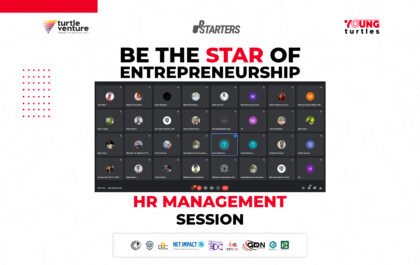A founder is first and foremost an entrepreneur and innovator. An entrepreneur is known to be the individual who develops a new business and bears most of the risks. They are the source of new ideas, products and services, and they are the main source of startup businesses and procedures.
So, if founders and entrepreneurs hold such importance, why fire them? It also raises the question- how will firing the founder help the business grow? These questions arise when there is a need for a possible change in management. That is the topic of discussion here.
What It Means to Be a Founder
Being a founder of a company means the entrepreneur who took the risk and held on with grit to work out the solution, the idea of a business that they did not want to let go off. A founder is an innovator, main source of ideas, who searches for solutions to a problem that they see, and they make it happen.
There’s no denying the role and importance a founder has in a startup. The drive and skills that a founder propels at the start of a business, gaining early success are not necessarily the ones that are required to run a business and ensure longevity.
This is where the step of firing yourself as the founder comes in.
How to Fire Yourself as a Founder and Grow Your Business
This is a huge shift in perspective and leadership the majority of us think we know. If a founder as a CEO holds so much importance, why should you fire yourself and replace it with another leader? Why step aside?
Founders put all their efforts into building the foundation of a business. But it does not end there. Creating a stable business is about much more work than most founders and entrepreneurs anticipate. That’s why stepping down can be the best decision.
It is a hard choice to decide on moving on. But it can be the key to keeping the startup on the right track and to maximize value for everyone who is involved. While it’s hard to accept as an entrepreneur, this can also mean a great push for the growth of your startup and develop it into a business.
Stepping down as the founder
The entrepreneur/ CEO needs to be self-aware of the progress of their company. It is necessary for them to know what’s good for their startup so it can flourish into a stable business venture. Which means that stepping down could be the solution to your company hitting a dead end of a stagnant situation, or not.
As the founder, you have to make that decision yourself. You have to know that this is what your company needs. You have to determine whether or not you have the right skills that are going to lead the company on the right path and will maximize the value.
Each stage of successful startups requires different strategies and different skills. This is why a CEO replacement that is going to treat it as such is necessary in cases where the founder cannot devise a long-term plan for the business to grow. It needs to be recognized as a business on a long-term journey.
You can still hold your position as the founder and head on to the board of directors, as chairperson. If you play your cards right, you can still work on your company while letting someone else take the reins in what they are competent in.
This will ultimately be fruitful for your startup and you can watch the startup grow into a business.
Transition
As the entrepreneur founder, you may hold specific relationships and rapport with people from all walks of life. There may be an uncertainty factor where the replacement may not adjust to the procedure of how you would run your business.
That is why it is necessary for the process of transition to be handled well. Here’s how you make that happen-
· Take them under your wing
You will have to prep the replacement CEO so they understand what they will be dealing with. This individual would be handling your company affairs, so to speak. Therefore, they are entitled to know your methods and procedures.
The rapport you have with your colleagues may not be the same one the replacement CEO will have. But what you can make sure of is that during the transition, they get to experience the environment and tone of the workplace.
· Ensuring that everyone is on the same page
Your investors, board of directors, colleagues and co-founders. Many of them will be the same ones you founded the startup with. So, it is necessary for them to be on the same page as you.
They must also respond affirmatively to the question of whether you should step down and would that help the business grow to its full potential. A leadership replacement is a massive change. But it is absolutely necessary to adjust with formalizing values of the corporate agenda and the process of setting goals.
· Celebrating the accomplishments achieved so far
It is important that the employers and employees have a vision of respecting the pre-transition work as much as they look forward to the post-transition goals. In this case, the CEO to-be should display humility, collaborative enthusiasm, and empathy.
According to Evan Kaplan, who took over the CEO position of InfluxData,
“I think the onus is on the incoming CEO to come to the opportunity with a deep appreciation of the road traveled already, a humble awareness of what they bring to the table, and most importantly, a deep commitment to a long-term partnership.”
· Knowing your strengths and shortcomings
The groundwork for potential publicizing of a company starts when a business reaches an average of 50-100 million in revenue. This stage requires a manager equipped with advanced level skills which the founder may not possess.
It is necessary for an executive who understands the responsibilities as well as the financial metrics that will prove to be optimum in building a developing public company.
Tim Gonser is the founder of the company DocuSign. He replaced himself with Matt Schlitz as CEO. Matt built a good team and achieved a compounded annualized growth rate of more than 150%.
But Matt stepped down too when it was time for the company to go public. He made room for a seasoned CEO who would go on to further the company on the next step of the organization.
Matt has commented,
“[DocuSign] took over 15 years from startup to IPO. Along that path, very different skill sets are required, and to the company’s credit, they did a good job of getting the right CEO at the right time, based on my experience at the time, to keep the momentum going”
· Focusing on the bigger picture
It may all seem overwhelming as a founder. It isn’t easy to give up leadership and control, especially from something that you lay the groundwork of.
That being said, you must have a vision for the foundation you are creating. There is a purpose in what you are innovating. It is creating solutions to the problems you saw and hoped to help solve.
Your team as well as your replacement CEO must acknowledge and work on that too. You will have to let go of your instinctive urge to keep it all afloat. Because turning your startup into a fully grown business needs to be looked at from a unique perspective.
This is also how the transition is easier on you as the founder who is firing themselves. You must apply the same attitude towards your team, your colleagues. You have to step back little by little so they know how to handle your absence as well as they handle your presence and input.
Leadership doesn’t always necessarily mean being on the frontlines and handling everything on your own. After a certain amount of time, you can let the reins a little loose and figure out your long term visions and plans.
You can then allow making the decision by yourself to step back and work on your business, not in it.
Moving on from being the founder
There are multifaceted factors here that may circulate in your mind about stepping down and moving on. That is exactly why it is your decision to make. You have to remember that it is your company, the startup that you founded that has reached a point where it needs more than your hard work and perseverance.
You have to know that everything doesn’t weigh your shoulders heavy, that you can take some load off. You can transfer the reins however quick or slow as you wish. You can hold an adequate amount of shares to be able to call the shots when you think you don’t want your company to head that way, stay as the chairperson.
You can also go on to innovate another startup and build the foundation, leaving the previous company. It is a decision you have to make that mutually does the best for both you and the companies you have helped build. It can either be a temporary gig so you can earn revenue and pay your bills, or it can move on to grow as a long term business venture.
I hope this read helps you understand your options in making a decision, whether you should move on or stay put. You have to know what is best for your company and what you want to do with it. This is how you decide how to fire yourself as a founder and grow your business.
Related posts
Subscribe for newsletter
* You will receive the latest news and updates on your favorite celebrities!
Young Turtles 2022 Workshop by Turtle Venture
Turtle Venture is here with a brand new workshop for you to join! The registration for Young Turtles 2022 is…
SHE LOVES TECH Bangladesh 2020
I f you’re a woman entrepreneur, then “She Loves Tech” would be a popular name for you, right? They will…
SELISE Coding Challenge 2020
A re you a coder? Are you bored in this quarantine while looking for opportunities to enrich or test your…
GP Accelerator Startup Talk Episode-1
D ue to COVID-19, it was like life almost had stopped in the earlier days. Though it’s not like that…
bKash Launches bTechWhiz to JumpStart Talent Hunt from University Graduates
The leading mobile financial services (MFS) provider in the nation, bKash, has started a program called “bTechWhiz” to find and…
“Be The Star of Entrepreneurship” Mentorship Sessions: Startup Literacy
The sixth mentorship session of “Be The Star of Entrepreneurship” 2022 was conducted on the 19th of April on Startup…
“Be The Star of Entrepreneurship” Mentorship Sessions: Startup Finance
The fifth mentorship session of “Be The Star of Entrepreneurship” 2022 was conducted on the 18th of April on Startup…
“Be The Star of Entrepreneurship” Mentorship Sessions: Product Design
The fourth mentorship session of “Be The Star of Entrepreneurship” 2022 was conducted on the 16th of April on Product…
“US Patent and Trademark Office Meets MSMEs and Startups” Session Held
A session was held recently on 10th May 2022; organized by iSocial Limited and facilitated by Turtle Venture- regarding…
“Be The Star of Entrepreneurship” Mentorship Sessions: HR Management
The latest mentorship session of “Be The Star of Entrepreneurship” 2022 was conducted on the 24th of April on HR…
“Be The Star of Entrepreneurship” Mentorship Sessions: Fund Raising
The latest mentorship session of “Be The Star of Entrepreneurship” 2022 was conducted on the 28th of April on Fund…
Bangladeshi Startups Getting $750 Million in Foreign Investment
In the last decade, the country has attracted over $750 million in foreign investment in the startup industry, according to…












